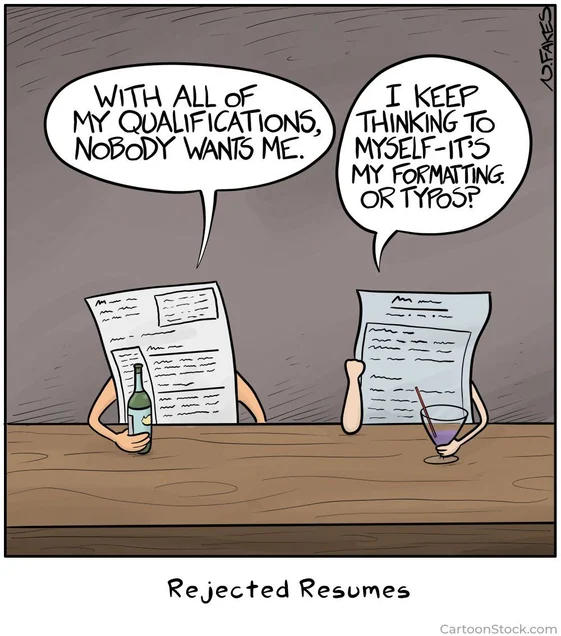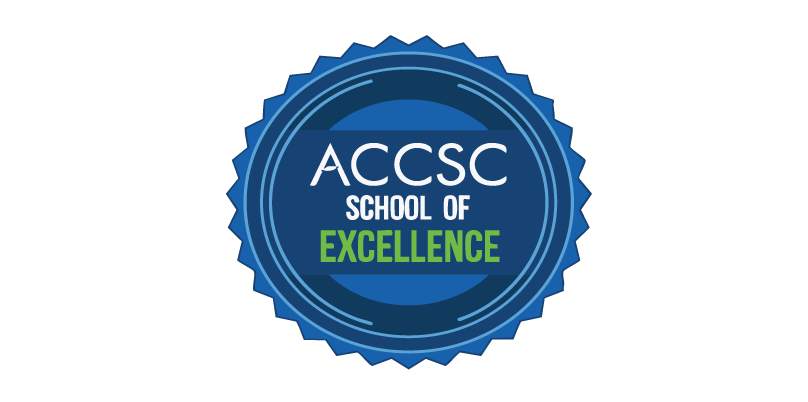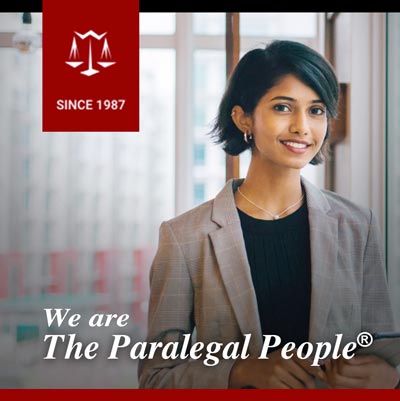A resume plays a huge role in whether a candidate lands in the “Do Not Interview” pile. Experience, education, and competencies included in a resume should demonstrate a reason for a prospective employer to conduct an interview. However, many job seekers showcase non-relevant details that have no direct correlation to workplace-useful skills, or they overload their documents with ineffective content. This takes up prime real estate on the page and reduces the space available to illustrate concrete value. Interviewers may pass on a resume during the initial resume screening process if they must put extra effort into verifying a candidate’s primary location, qualifications, and background.

First resume impressions (positive or negative) take less than 15 seconds! That’s a small amount of time to make a big impact. An influential resume will quickly tell a story about the candidate: who they are, what they offer, where they gained skills, why they should be interviewed, and how they could contribute if hired. Resumes can make a candidate stand out or be passed over.
Resumes are the advertisement, and YOU are the product. Hiring managers and recruiters form immediate perceptions of competencies based on the quality of the resume. These impressions play a crucial role in determining whether a candidate is selected for an interview. Candidates must present themselves in the best possible light and show they can impart information professionally. Poorly constructed documents may unintentionally convey reduced abilities in cognition, attention to detail, and organizational skills. Aim for clear, concise, well-aligned, grammatically correct, and typo-free communication. Resumes with spelling errors, inconsistent punctuation, hard-to-read fonts, poor structure, generic job descriptions, irrelevant or misleading details, undefined timelines, and those not meeting minimum requirements are disqualified immediately.
Resumes longer than two pages are generally discouraged across most industries. A one-page resume for those early in a career is recommended. More experienced candidates having significant time in professional roles can effectively use a two-page format, but they may need to trim things down. Those who review resumes often become overwhelmed reading documents spanning multiple pages. On the other hand, they don’t want to see every responsibility related to each position in small font squeezed onto one page. Instead, they prefer a concise overview of notable duties and contributions that add value. Emphasizing qualifications related to job postings briefly and succinctly is a great way to showcase effective communication. Stick to clear, short points, and avoid long narratives.
Busy visuals, bold colors, ready-made templates, and strange fonts will get you noticed for all the wrong reasons. Instead, craft an engaging narrative with a logical flow. Do this by utilizing a simple header and including an introduction. This can be a qualification summary emphasizing a particular skill set, a career objective targeted toward a specific position, or a professional profile that blends both. Feature pertinent skills and then list education and professional experience with achievements. Leave off headshots to prevent hiring bias or discrimination.
A professional resume should include these five sections.
- Header
- Introduction – with or without a tagline
- Skills
- Education
- Experience
Each section should be appealing and easy to skim. Incorporate headings, subheadings, bullets, and white space to create a straightforward structure that helps readers navigate information easily. Including keywords from the job description is important but they must also be supported by education, accomplishments, and contributions that directly correlate with business objectives.
Resume headings should include a name, city and state, phone number, and email address. When residency is close to an employer hiring for an on-site position it’s a good idea to provide a physical location. The actual street address is not required. Candidates open to remote work or relocation should mention this in the header. Core work hours may be based on a specific time zone for communication purposes, and some companies hiring for remote/hybrid positions may still require employees to live within a commutable geographic area. Not including this information on a resume could result in it being screened out.
A short tagline at the top of a resume can be effective. It should be a concise introduction to the summary, skills, education, and professional background. The recommended formula is Job Title + Years of Experience + Skill/Task/Outcome. Consider the following:
- Newly Credentialed Paralegal with Internship Experience Seeking First Position
- Enthusiastic Paralegal Graduate Seeking Entry-Level Position
- Professional Paralegal with 5 Years Experience Supporting 4 Family Law Attorneys
- Bi-Lingual Administrative Assistant with 3 Years’ Experience Performing Front Line Office Work
Prioritize skills and education prominently after the introduction. Hiring managers usually expect these sections to appear on the first page. Moreover, it is a way to quickly emphasize strengths and value, capture attention, and encourage further reading. List the degree earned before the academic institution. Education should include credentials that were awarded by colleges or universities. Institutions attended that did not result in a degree are customarily omitted. Once a college credential is received there is no need to denote a high school graduation date or diploma on a resume.
To date or not to date? Always list the month and year when each job started and ended under experience. While the exact day isn’t necessary, listing months removes any skepticism about purposeful attempts to conceal gaps in work history. Short-term, temporary, or contract assignments can be denoted as such. Relevant dates associated with education, special training, internships, licensures, and memberships should also be included.
Lack of transparency in dates creates confusion about experience and qualifications. A position listed from 2022-2023 could be interpreted in multiple ways. It could mean employment only lasted one month, from December 2022 to January 2023. It could also indicate employment lasted twelve months, from January 2022 to January 2023. And finally, it could signify employment lasted for nearly two years, from January 2022 to December 2023. The way dates are presented matters! Don’t try to minimize breaks in employment or make limited experiences appear longer, otherwise employers may become suspicious. Create a positive first impression by being open and honest about employment lengths.
Location. Location. Location. Employment history should specify the title and company name and include the company location for each job held. Remote or hybrid roles can be indicated in parentheses after this. A full address is not required, but the city and state should be available.
Highlight functional results and quantify performance using metrics and numerical data. Past positions should be written in the past tense and current positions in the present tense. In most cases, 3-7 bullet points are sufficient. More than 8 is not recommended. Keep each point to two lines focusing on what was done and why it was important. Identifying specific outcomes and their effect on productivity can significantly enhance a candidate’s application. For example:
- Managed a portfolio of 100+ cases while successfully meeting weekly contact deadlines.
- Communicated and corresponded with 8 clients daily and maintained complete and accurate client files using case management software.
- Answered a 5-line central telephone system and directed 100 calls to the appropriate recipients daily.
Hobbies or other outside interests should only be listed if they are well-thought-out additions and illustrate capabilities relevant and beneficial to the position. For example, participating in food drives or programs geared toward community service and outreach may be appropriate as they demonstrate knowledge of resources and engagement. While adding some personality and a human component to a resume can be helpful, unrelated details should be omitted unless they specifically fit into the company culture. Too little or too much information, including non-relevant details, can make it difficult for the employer to understand a candidate’s motivation to apply for the position.
Have a designated reference page. Keep a list of professional contacts handy in a separate document and provide them when asked. Employers assume references will be “available upon request” so there is no value in including this as a line item on a resume.
Use a PDF to preserve the layout of the original document exactly. Word versions may display differently on a recipient’s computer or device due to variations in settings, embedded fonts, automatic formatting, and software versions.
What’s in your resume? Will it help or hinder your interview chances? Employers use resumes to screen prospective employees for professional positions. The easier a resume is to read the better the chance it will be read. A resume with impact will look good and sound good. It will be concise and convincing.
Key Takeaways:
- First resume impressions happen in seconds. It should be aesthetic, functional, and easy to skim.
- Obvious mistakes, gross appearance issues, too much clutter, and irrelevant content do not make a resume stand out.
- Skills and education should be prominently displayed and align with the job posting requirements.
- Experience, achievements, and results (not just job duties) must be quantifiable and show a candidate’s ability to succeed in the role.
- Dates and locations provide an accurate context for time spent in work tenure and academic settings.
Contact Center for Advanced Legal Studies at paralegal.edu to learn more about our graduate resources, accredited paralegal programs, and class start dates.
.
Topics: credentials, career, featured
Director of Outreach and Career Services
Tami has an extensive and varied professional background that spans criminal justice, paralegal education, and international school marketing and communication. Her career has been guided by a focus on developing strategic partnerships that facilitate school growth and student opportunities. She holds a Bachelor of Science in Degree in Criminal Justice from Texas State University.






